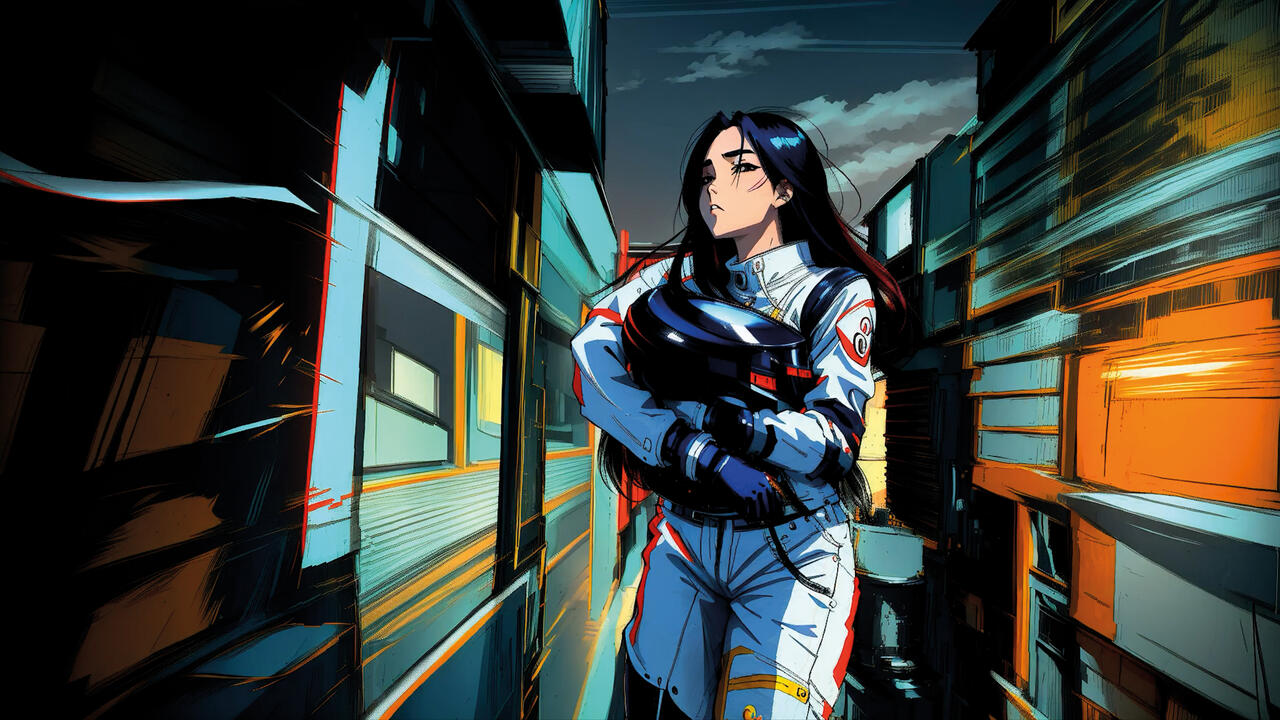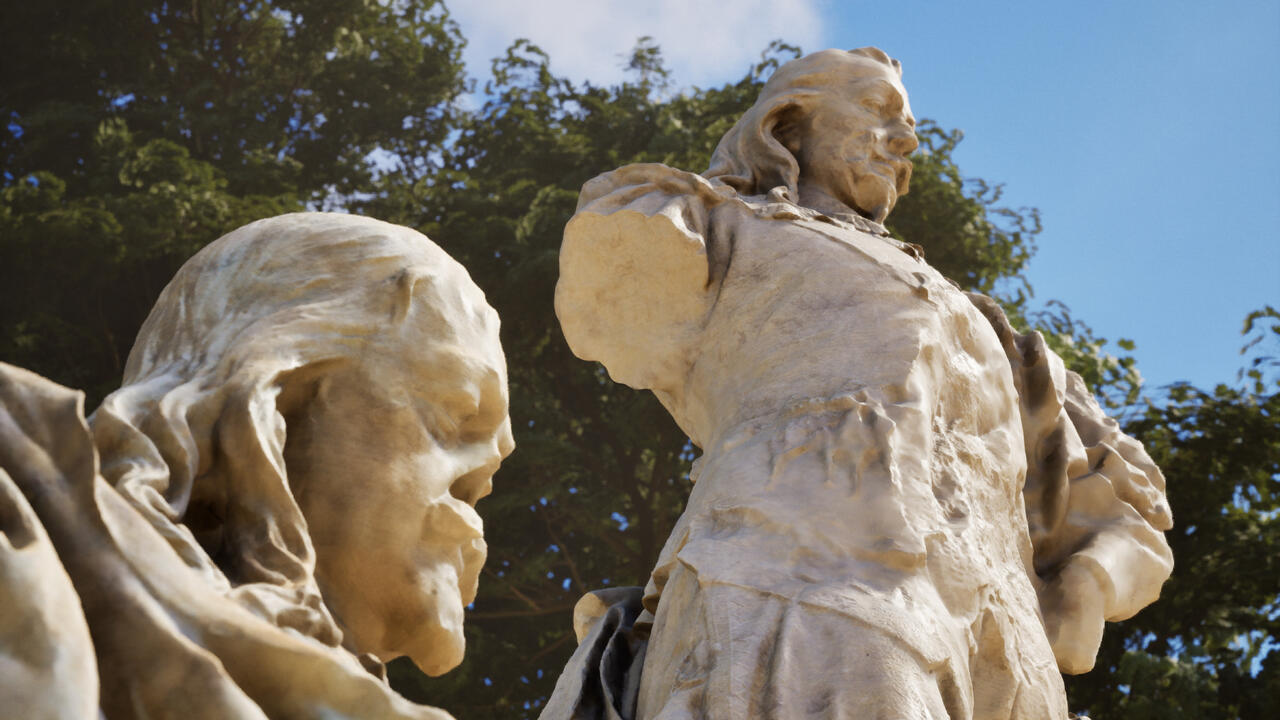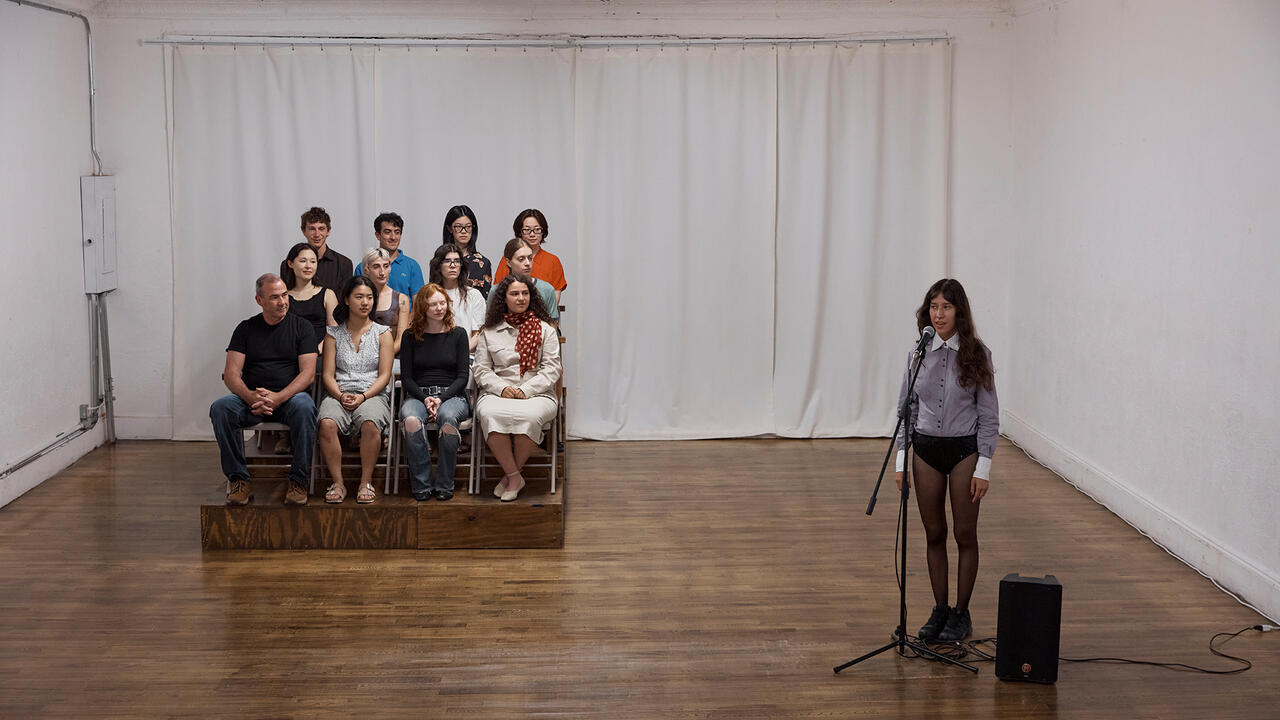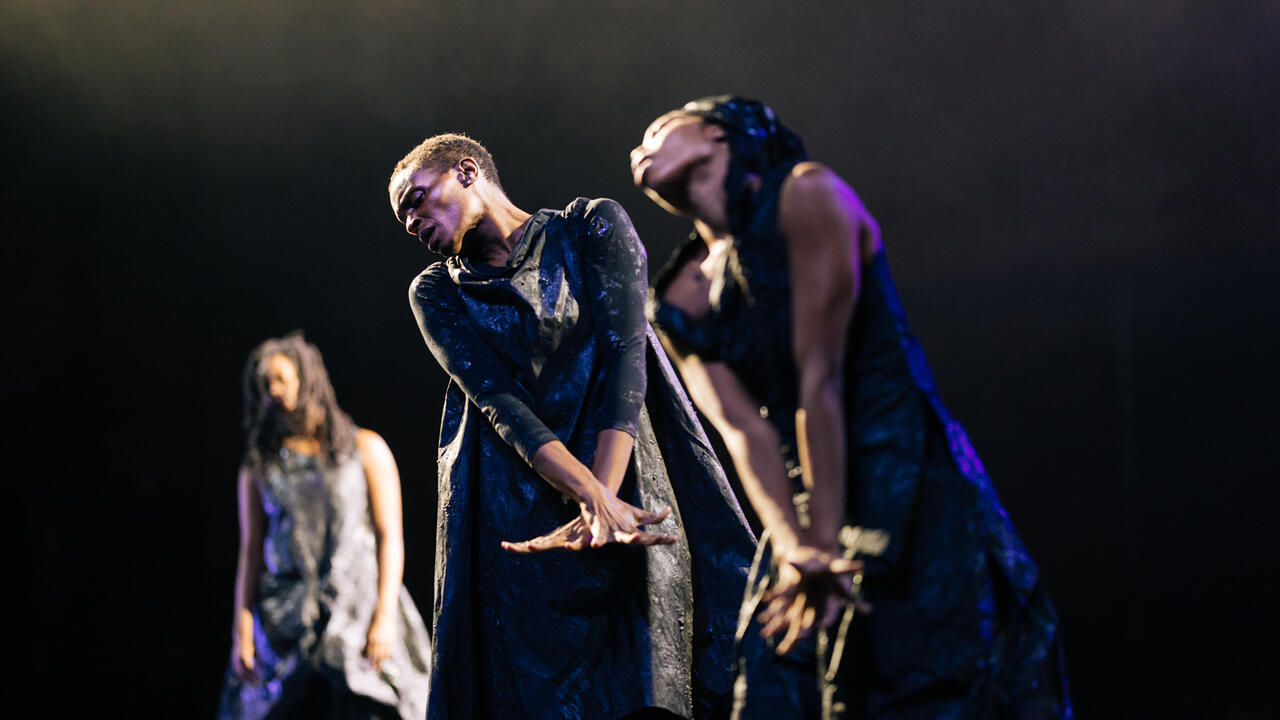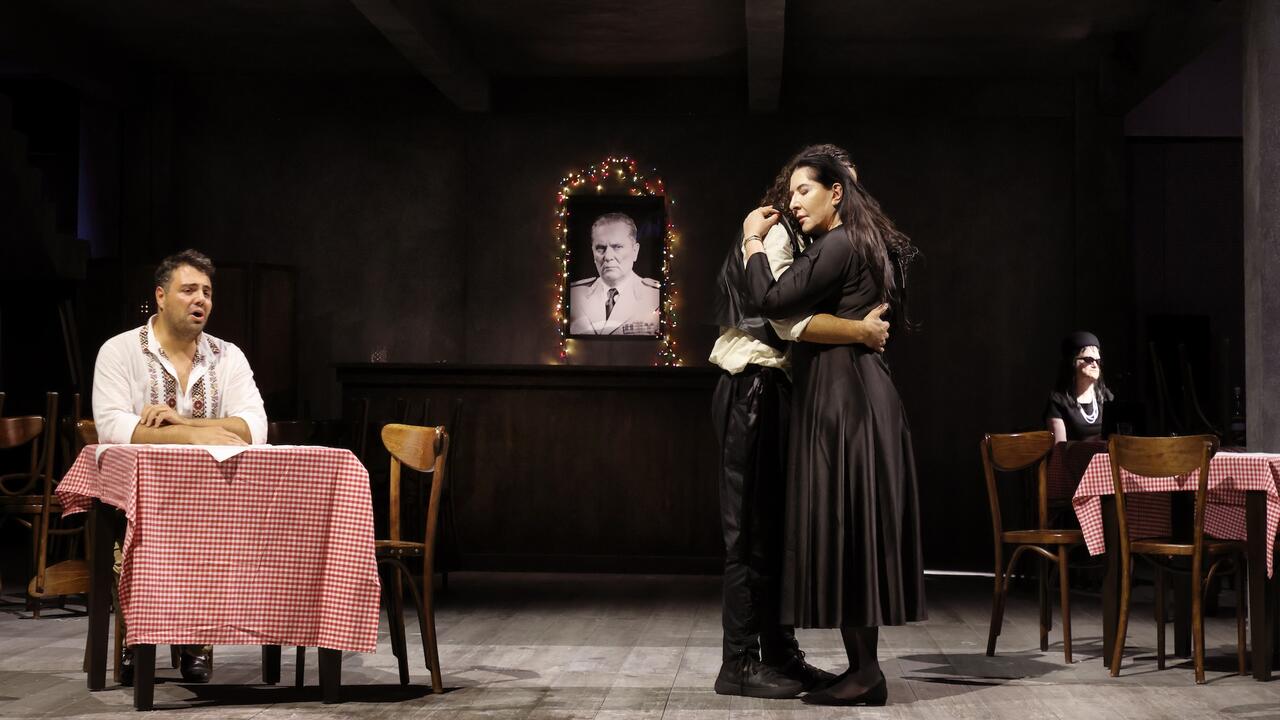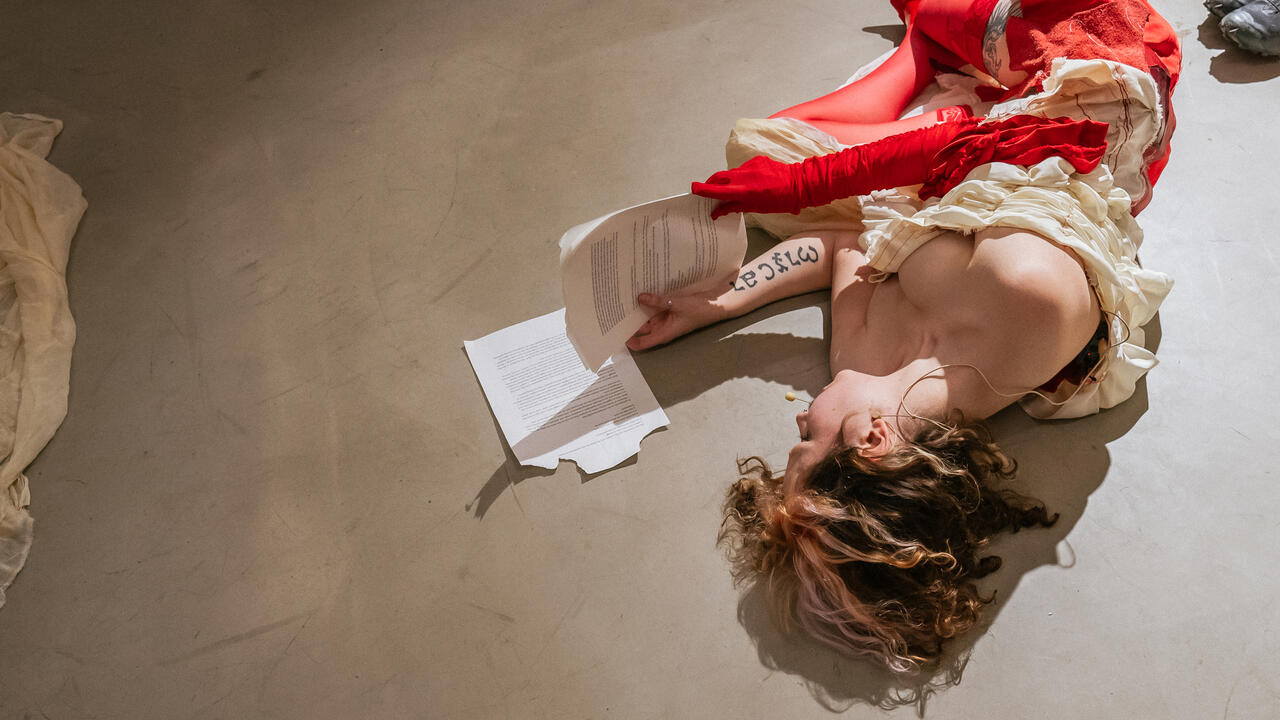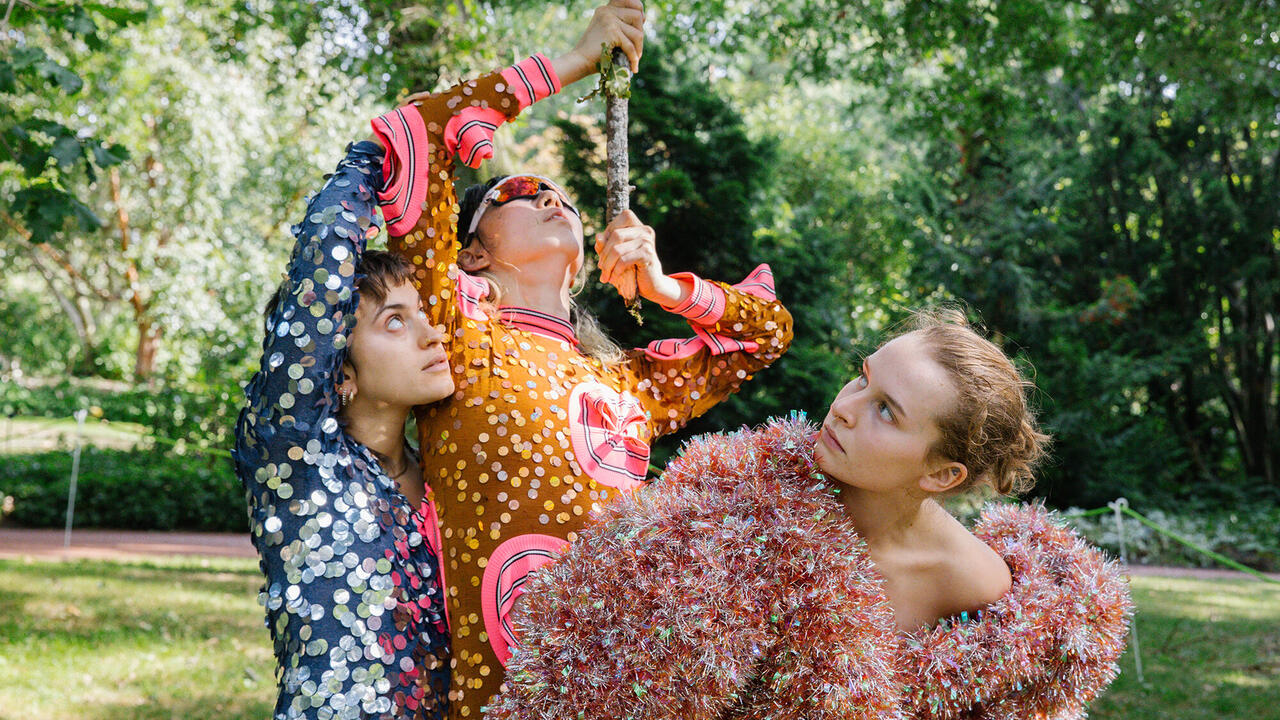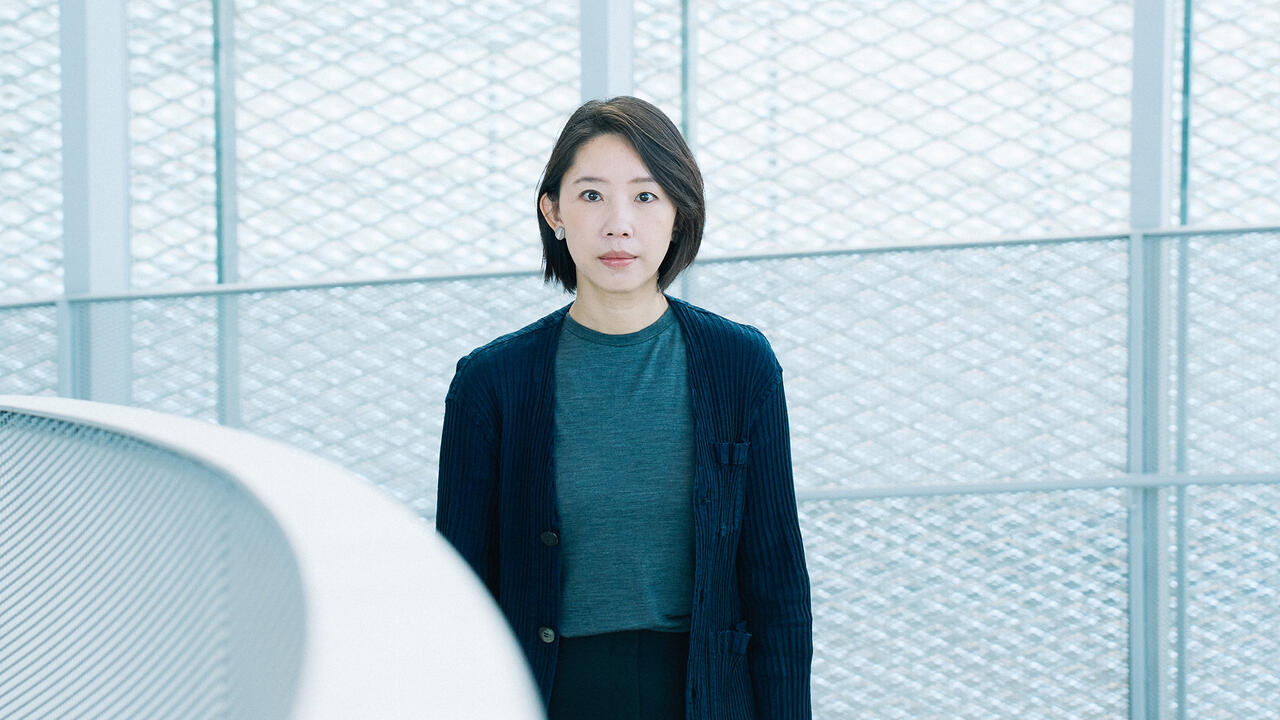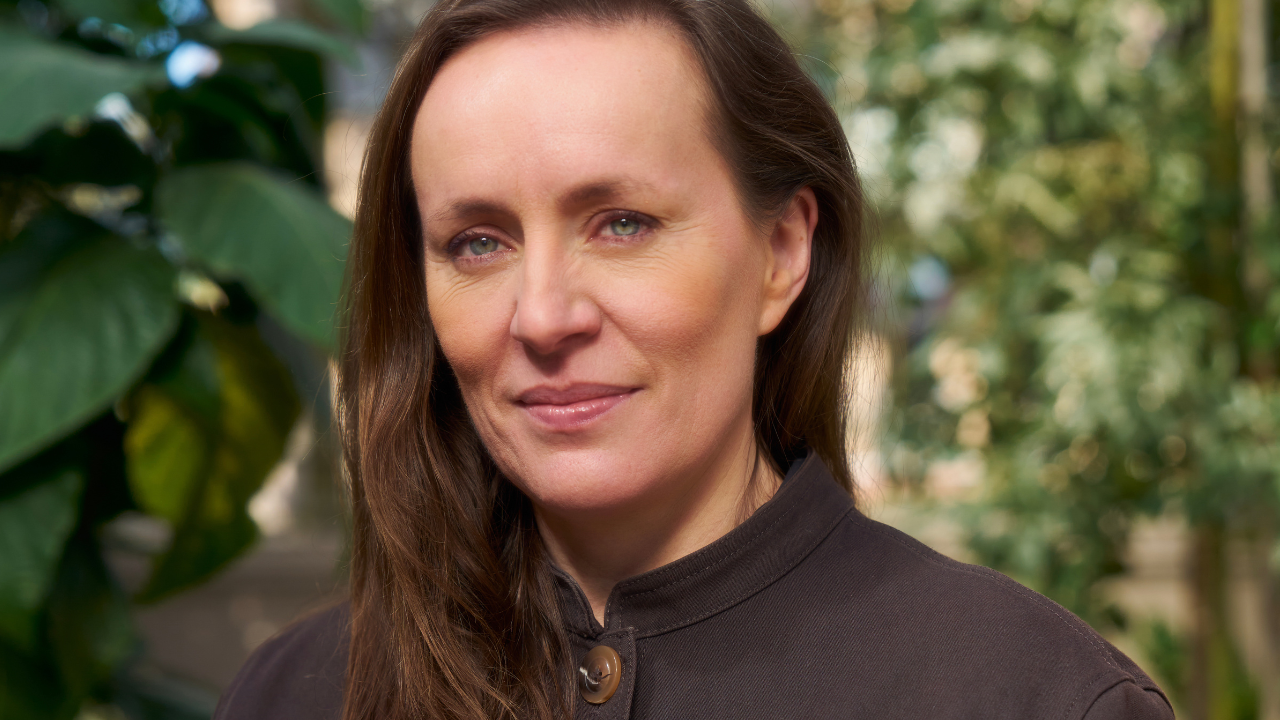Questions & Answers
For 40 years, Suzanne Lacy has worked collaboratively to create installations, videos and large-scale performances in response to social themes and urban issues
For 40 years, Suzanne Lacy has worked collaboratively to create installations, videos and large-scale performances in response to social themes and urban issues

Jennifer Higgie You originally studied biology and then psychology. What inspired you to become an artist?
Suzanne Lacy I was always interested in art, but as a high-school student in a small working-class town, I was told that the only way artists could make money was as a commercial artist – rather odious, I thought. I met Judy Chicago when I was a graduate student in psychology as she was starting her Feminist Art Programme [which Chicago initiated at Fresno State University in 1970]. I thought, wow, I could be political and make art at the same time. But at first, she wouldn’t let me in the programme.

JH Why not?
SL She was convinced that I was on a trajectory to be a doctor, and she wanted to work with women who would become artists.
JH You proved her wrong!
SL Yes, and I haven’t let her forget it! [Laughs] Besides thinking about political issues (race, class and gender inequities), I was also very interested in the physical body. My early works reflect my background in biological and social sciences; this is probably one reason I became involved with issues of violence.
JH How did your work change after the Fresno Feminist Art Programme?
SL At CalArts [1971–3], I worked with Judy, Sheila Levrant de Bretteville and Miriam Schapiro in their feminist programmes, and I also began a lifelong relationship with Allan Kaprow. It was a fertile moment when art was changing in the direction of performance, conceptual art and installation. In 1972, I did a performance with Judy, Sandra Orgel and Aviva Rahmani called Ablutions. We staged a series of images around our bodies: a woman was bound with gauze; women bathed in raw eggs, earth and blood; and a tape recording of women talking about rape droned throughout. Under Kaprow’s tutelage I experimented with art/life issues and actions, including inviting people to a house over the course of three days where I was working as a carpenter.
JH You dedicated your book, Leaving Art: Writings on Performance, Politics, and Publics, 1974–2007, to Kaprow. What was it about his work that inspired you?
SL Allan questioned meanings: at that moment his work was moving from an immersive and performative form toward an intimate and experiential one. I was interested in relationships as materiality and questioning the boundaries of form.
JHYou’re also, of course, a writer. What does creating a performance add to a piece of writing, or what can a piece of writing do that a performance can’t?

SL I was surrounded by artists who wrote. I wrote because it allowed me to explore what I was doing as a feminist and as a performance artist, in an environment where there was little criticism. Also, writing gave me pleasure.
JH Could you elaborate on the lack of criticism at the time? Because obviously there was criticism around, say, painting.
SL You wouldn’t find a robust critical environment surrounding West Coast experimental and performance art – all that emerged in stages. Lucy Lippard, David Antin, Linda Burnham, Arlene Raven and Moira Roth were writing about these issues, as far as critics go, but artists like Kaprow, Chicago, Eleanor Antin, Martha Rosler and Allan Sekula wrote prolifically as part of their practice.
JH What do you think about the reception of what is loosely termed socially engaged art now? Do you think there’s a rigorous dialogue around it?
SL Yes, I do, although I think there is still a lack of understanding of the actual mechanics of what has become a very complex field of practice. When I edited Mapping the Terrain: New Genre Public Art, there wasn’t much critical discourse on social practice but today the parsing of terminology – words like ‘hospitality’ – is offering new perspectives.
JH What do you mean by 'hospitality'?
SL The title of this year’s Liverpool Biennial is ‘The Uninvited Guest’, and earlier this year I was included in a show at the Smart Museum of Art in Chicago called ‘Feast: Radical Hospitality in Contemporary Art’. Rirkrit Tiravanija’s practice has been explored through this lens, although meals have been part of performance for decades.
JH What do you see as the crucial questions around performance and socially engaged art today?
SL How important are social and political operations generated by the work? How does a temporal work make its way into the museum and how do contemporary conventions of display challenge that move? Is scale an aesthetic or political concept?
JH Why frame a concrete desire for change within an aesthetic discourse as well as a social one?
SL Because it interests artists! And we’ve set ourselves up for this discussion by our own rhetoric of social transformation. ‘Participatory art’ or relational aesthetics opens up a wealth of pragmatic, formal and ethical questions, and artists like to think about these things. Of course, social questions are different to aesthetic ones, at least at this point. In terms of the public sphere, you might ask, how best to address a diversity of audiences simultaneously? How should time-based, relational and durational works be represented within changing conventions of display? This is an art question.

JH You manage to combine very pragmatic, analytical responses to certain situations that are often framed in a hugely imaginative way. What does an imaginative framework add to a work that is about quite practically effecting change?
SL If you mean what does it add for the people with whom I am working, that is one thing. On a social and communicative level, art is effective in bringing people together in ways that allow for new interactions. But if you’re referring to my art, I would say that it is not only, or necessarily, about effecting change. If this were my major interest I’d probably have become a politician. I make art for what some might consider quite romantic reasons: to invent, to give shape through imagination, to play (though it is quite hard work). I make art as a compulsion, really, as a necessity. I might apply formal and conceptual ideas from art to relationships, public agendas and social movements. But I have an ethical obligation as a person to make the world more equitable. Feminism is broader than some might think: it addresses forms of oppression not strictly limited to gender.
'My early works reflect my background in biological and social sciences; this is probably one reason I became involved with issues of violence'
JH In your 2001 essay ‘Seeking an American Identity (Working Inward from the Margins)’, you argue that: ‘The promise of 1970s activist artists was a social transformation that could be accomplished in part through art; in significant ways this has not occurred.’ Could you elaborate?
SL Of course there have been significant social transformations since the 1970s, for instance in the global awareness of women’s issues. But in the us, have we stopped creating draconian laws that put young people into prisons? No, we imprison more people in the us than almost any country in the world, save China and Iran. The income divide in Western societies is greater than it has been for decades. When I was younger, I thought awareness would ensure change. Now I see how awareness is manipulated to create a working class that votes against its own self-interests. However, people are very resourceful; every generation finds new ways to fight back.
JH Earlier this year, you re-worked Three Weeks in May, a performance from 1977 that focused on incidents of rape in Los Angeles. Could you talk about what it meant to make Three Weeks in January in 2012?
SL In terms of the civic sphere there were large differences. In Los Angeles, the issue of violence against women is framed as one of homeland security; training programmes exist for police officers, and dating violence programmes are offered in public high schools. The Police Chief and Mayor came to press conferences and negotiated how statistics would be presented on the map. City leaders have become more progressive on women’s rights and anti-violence organizations have an uncommon access to civic agendas. The women that had started the early rape awareness and service organizations are now quite mainstream with civic officials sitting on their boards.
In the 1970s, rape wasn’t talked about by anyone and the social agenda in Three Weeks in May was to address personal and political silences. Things are now very different on that score, but the one thing that hasn’t changed is the shame felt by women. This is surprising: the fact that women still feel somehow guilty for their own victimization.

JH What was it about this project, in particular, that made you want to revisit it after 35 years?
SL Carol Stakenas, the executive director of Los Angeles Contemporary Exhibitions, asked me to do it for the Getty’s Pacific Standard Time Performance and Public Art Festival. After some thinking I felt it could be interesting to re-visit it, particularly in terms of modes of organizing. The Internet and social media offer new organizing tools but ones I was not sure would fit this topic as well as ‘old school’ face-to-face strategies. I was also interested in seeing what might have changed in the incidence and kinds of rape, political and institutional responses to the issue, and so on.
In the earlier project we were particularly sensitive to two things: media representation and how rape occurred within different local cultures. This time around, we focused not only on mass media, but on new forms of social media including a Twitter campaign. We also extended the range of our organizing, not only among diverse ethnic cultures but also, for example, with homeless women, women ex-prisoners, and immigrant women. Because of a rise in adolescent dating violence and the suspected under-reporting of acquaintance rape, young people were important, so we gave presentations in schools and colleges. There were 50 events, public and private, throughout the region over the course of three weeks. For one of the events, I invited ‘performers’: a literary theorist, an activist who founded the first rape treatment centre 40 years ago, the police chief, assistant mayor, a screenwriter for television crime shows, a consultant on male violence, a social worker who does counseling, an anti-war activist and an NBC television journalist. There were cameras and lights trained on the group; around the platform a dozen bloggers and tweeters relayed the conversation through the lens of social media, which was the only public audience. They were asked to consider changes over time in the narratives of rape within their different spheres of expertise. Called out of their normal frames of reference, they considered how the storying of rape might impact policy, programmes and changes in societal perceptions. I wanted to achieve an exploration of the meta-narratives of rape that, strategically considered, might form new political approaches to ending violence. I’d hoped the conversation would be experimental, and they would talk in new ways to each other.
JH And did that happen?
SL Yes, they were quite wonderful. To a police officer, the raped woman is a victim. To the psychologist, she is a person in need of rebuilding her life. A newscaster or screenwriter has to struggle to incorporate her story into mainstream media now that the novelty of the subject has worn off. For a scholar of social movement framing, how the story is narrated could predict whether college women might report a date rape. Other themes emerged: How do victim’s stories told in their own voice affect public policy? Are victims automatically gendered in people’s minds? It was a fascinating discussion.
JH And you’re re-presenting this work in the Liverpool Biennial?
SL I was recently in Liverpool and several people from different communities were interested in the subject of rape, so I think that presenting elements of Three Weeks in January will be very relevant. As a maker, though, I’m interested in exploring this notion of a performed conversation further.
In one sense, conversation is at the centre of many (though not all) of my performance works. A couple of years ago, at the Museo Reina Sofía in Madrid, I also worked with a cross-section of activists, artists, women from a shelter, journalists and politicians to consider how a new narrative might be constructed to challenge media fatigue with domestic violence. The Tattooed Skeleton involved several tropes over three months including this conversation on narrative strategies; a national campaign to gather 400 anonymous stories of domestic violence, subsequently handwritten on blank masks; a video made in secret in a shelter; a performance inserted into a national awards conference that utilized both the video and masks; and a mass performance staged as part of an annual protest rally in which the women who had died from domestic violence were named.
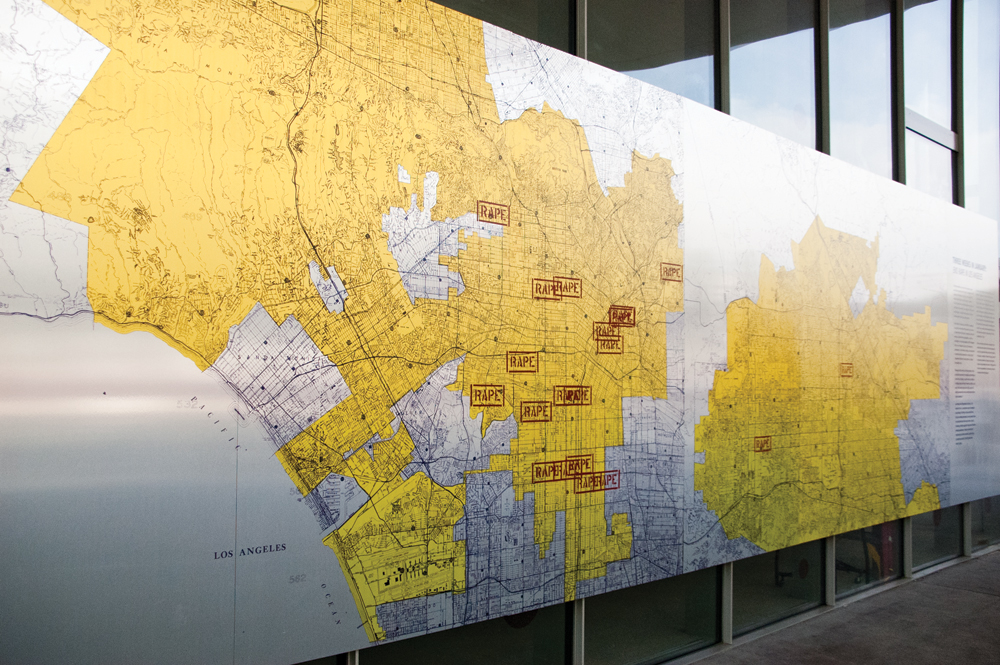
I have long been interested in multi-vocality, in collective and embodied definitions of social issues, and in how intimacy is present in public spaces. Conversations between people can be exquisitely beautiful, but they can fail miserably as art. It is part of the edge in my work, the possibility of failure through disruption or lack of depth or relationality. Success is a fragile combination of the visual, the chemistry between conversants, the coherence and shape of the conversation and the emotional space generated around the event by performers and witnesses.
JH Your projects often involve very long-term interactions with communities that are then shown in a museum. What do you think happens in that transition, in terms of the original energy being dissipated?
SL In terms of this kind of work moving into museums and galleries, that is a complex question. First, the acceptance of social practice has shifted: when I began in the 1970s this kind of political and relational work was accepted within performance art circles, which were relatively small and highly experimental. Artist-run spaces provided venues for the review of work that took place ‘outside’. Display conventions were straightforward and relatively simple, without a lot of attention to the visual aspects (think black and white photos and grainy Super-8 films). This was in part due to the technology available to us. As social practices have become more acceptable, and the opportunities to show this work in museums are therefore greater, artists have to deal with several issues: representing process-based durational work; dealing with expectations of visual display; and re-orienting viewers who expect consumable products.
As a case in point, I have been working with Carolyn Hassan and Penny Evans from the Knowle West Media Centre [kwmc] and Arnolfini in Bristol for five years now, travelling back and forth to collaborate on a project entitled The University of Local Knowledge. We’re creating an online website that reinforces the importance of the knowledge from the community itself and are committed to the project having deep and sustained relevance there. Penny Evans has been instrumental in leading the kwmc staff in collecting almost 1,000 short videos on subjects from how to grow tomatoes to how to create a rap song. The website will allow people to reconfigure the initial, and somewhat ironic, compilation of videos (arranged according to traditional higher education) into their own curricula. As a user you participate in a reconfiguring of knowledge, exposing your preconceptions. This all takes time, and substantial partnerships, and we are still considering how the work operates inside the various discourses it addresses, including the arts – how it will manifest.
The importance of museums, art magazines, biennials and so on, is that they are where professional discourse and competing ideas move the field of visual art forward. Installing The Crystal Quilt in The Tanks at Tate Modern, 25 years after it was performed – it originally involved 430 women over the age of 60 who had gathered to discuss their thoughts on growing older – is a representation of the ideas inherent in the work, a way of keeping them alive in art and art education. Conceptually, for me, the most interesting part of this process is considering how the complexity and the depth of the work will be represented. Catherine Wood [Curator of Contemporary Art/Performance at Tate] and I are exploring how, as the piece continues to evolve inside the collection, to present it fully. It is a process in and of itself.
'I apply formal and conceptual ideas from art to relationships, public agendas and social movements; but I also have an ethical obligation to make the world more equitable.'
JH In her introduction to your book Leaving Art, Moira Roth lists questions that she feels will always be central to your practice. I’d like to re-visit some of them now. The first one is: ‘What sites, galleries or public spaces are the most effective for staging these performances, and which audiences does one want to reach?’
SL Well, it depends on the work. The siting for it will relate not only to the interests of particular audiences but to how one decides to construct the work and what questions one is interested in pursuing. I am very aware of complex audiences, multiple audiences, layers of audience, and how things are relevant to different people. Multivalent forms of communication interest me aesthetically as well as politically. I think the danger with this kind of project is that the subject of the work can overwhelm aesthetic concerns, causing an inadequate reading. Consider, for instance, when Kaprow experimented with making art work for a newspaper: was he trying to reach an audience or experimenting with aesthetic propositions, or both?
JH Another of Roth’s questions: ‘Should one attempt to create public awareness with mass media, in an audience not physically present at a performance, and if so, how?’
SL It depends. Operating within mass media as a professional – gaining visibility for one’s work – is one thing; using it strategically toward political ends is another; and working with media as an aesthetic proposition is yet another. The intersections of the last two are of most interest for me as a maker, and for some art works I consider mass media or social media as part of the aesthetic construction of the work.

JH If your work is absorbed into the market do you feel that that neutralizes it at all?
SL I doubt there is much danger of that for me, at this stage of the game. The question of how one enters the discourse is complicated, because today, particularly, what could be covered by the word ‘market’ includes access to history, an economy to sustain oneself and one’s work, and the ability to control resources to produce more work. To sell a work is not to be absorbed into the market. It’s not that simple. Being acquired by a museum is different to having an active collector base or having your work auctioned at Sotheby’s. There are different kinds of presentational venues: Miami Basel is different from the Liverpool Biennial and each has its own meanings and audiences. Most interesting today is how the legacy of the pioneers in performance and conceptual art will be preserved. What does it mean to collect a performance? I believe one reason Joseph Beuys is better known than Allan Kaprow has to do with the fact that Allan had a deliberately non-object orientation and was not easily collectible. Beuys regularly backed up his conceptualism with objects, or at least his dealers did. Not a lot of performance and conceptual artists in the 1960s and ’70s thought about the market; now, it’s hard to find an artist that doesn’t.
JH A final question from Roth: ‘In this work, is there a departure from art into life?’ To which I would add: how does this relate to your title, Leaving Art, which seems quite melancholy?
SL Well, I actually think it’s funny but I’ve been told I have a somewhat dark humour. It’s a triple entendre. The negotiation of, and curiosity about, the territory between art and life is the centre of my work. When does a work leave art to become a more effective life action? This was one of the questions that formed my work as well as that of my colleagues. Another central question that emerged particularly in the 1990s in the conversation on ‘plop art’, was whether, if one makes objects, it is a good idea to leave them around in public spaces. This prompted more attention to temporality as a medium, an idea that merged performance with public art. Finally, artists whose ideas profoundly influenced the present moment – those from the 1950s, ’60s and ’70s – are literally leaving the world, and a lot of them are already gone. It’s important to me to acknowledge my conceptual heritage.
JH And important to keep the conversation going?
SL Absolutely. As an activist it’s important to build on past practice, or you will only reinvent the wheel. Change doesn’t occur through a single authorship. As an artist, it is important to me that those who influenced my direction in art activism – like Judy Chicago and Luis Valdez – and those who influenced my performance aesthetic development – like Allan Kaprow and David Antin and Eleanor Antin – are clear. I didn’t come from the genius of my own inventiveness but from a complex and fulsome conversation operating in the 1970s. Over time, I took this conversation in my own directions, perhaps, but always within a rich context of colleagues and role models. I’m quite lucky in that, I think.
JH How do you gauge the success or failure of your work?
SL The best I can hope for is to relate a set of experiences that move us in a direction of understanding each other better, understanding social systems better and thinking about new ways to make art. That’s pretty much it.
Suzanne Lacy is an artist based in Los Angeles, USA. She edited Mapping the Terrain: New Genre Public Art (1995), and her book of collected writing, Leaving Art: Writings on Performance, Politics, and Publics, 1974–2007 (2010), was published by Duke University Press. Suzanne Lacy: Spaces Between (2010), by Sharon Irish, is published by University of Minnesota Press. Lacy is the Chair of the Graduate Public Practice Program at Otis College of Art and Design in LA. Recent performances include The Tattooed Skeleton (2010) for the Museo Reina Sofía, Madrid, Spain; Prostitution Notes (1974/2010) at the Serpentine Marathon, Serpentine Gallery, London, UK; and Anyang Women’s Agenda (2010) in Anyang, Korea (with photographer Raul Vega). With the Arnolfini Gallery and the Knowle West Media Centre she is currently working on a long-term project in Bristol, UK, 'The University of Local Knowledge'. The Crystal Quilt (1987) is on view in The Tanks, Tate Modern, London, until 28 October. Her work will be shown in the Liverpool Biennial, UK, from 15 September – 25 November.









